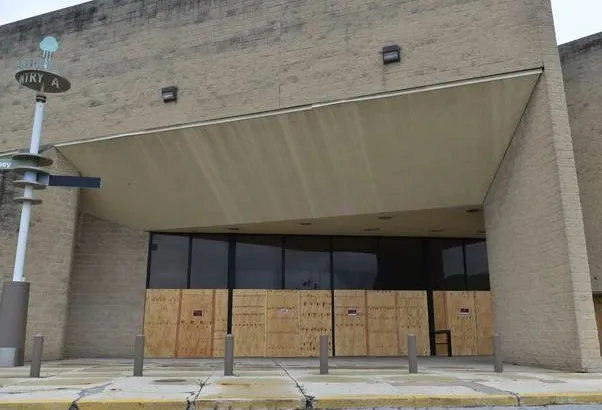MONROEVILLE, Pennsylvania — In 1969, when the Monroeville Mall opened to much fanfare in the eastern suburbs of Pittsburgh, downtown businesses, as well as government and civic leaders, understood what the impact would be on the city’s commercial core. Shoppers would rush to enjoy free parking, less congestion, and a shopping experience all in one massive enclosed climate-controlled expanse.
No more dodging raindrops and slushy snow puddles in between stores blocks from each other, being inconvenienced by antiquated early closing hours that matched the business crowd’s commute out of the city at 5:00 p.m., or paying astronomical parking rates in city-run garages.
There was even an ice skating rink that drew hundreds of teenagers to that mall every weekend.
City leaders and business owners had already witnessed how Northway Mall — the region’s first shopping center, built in the northern suburbs — had siphoned customers away from downtown in 1962, drawing crowds to Ross Township with attractions like its indoor aviary.
The golden age of malls began gradually, but by the early 1980s, two decades after the openings of Northway and Monroeville malls, they had reached their peak, emerging as the dominant retail and social hubs in cities across America.
The peak of the mall era came in the mid-1990s, with the opening of the colossal Mall of America in Bloomington, Minnesota, a sprawling complex featuring indoor roller coasters and more than 500 stores under one roof.
By the early 2000s, however, the decline had begun. The rise of online shopping, coupled with growing nostalgia for open-air “town square” experiences, eroded the mall’s cultural dominance. Oversaturation only hastened the fall, and by the mid-2010s, store closures were accelerating. When COVID restrictions arrived, many malls were already crumbling, economically and physically.
Locally, both Allegheny Center Mall and Century III Mall have closed, while Monroeville Mall now hangs by a thread, not only due to COVID’s lasting impact but also a series of violent incidents, including a fatal shooting in 2020 and a stabbing in 2022. These events have driven families away, leaving parents far less willing to let their teenagers roam the mall freely as they once did in the 1980s.

Twenty years ago, Walmart tried to build here in Monroeville during the height of the anti-Walmart movement. Then, Democratic presidential candidate John Edwards even visited the area to rally opposition, and local resistance prevailed, prompting Walmart to walk away.
This week, however, it returned, purchasing the mall for $34 million. The plan? Demolish it. The company has already applied for a demolition permit, intending to replace the structure with a mixed-use development slated to open in 2029, featuring retail, dining, entertainment, pedestrian areas, and public green spaces.
Walmart has not publicly commented on the project yet, but current tenants have been given until April 2027 to vacate. At the height of the mall boom in 1982, more than 2,500 malls dotted the country. Today, that number has dwindled to between 700 and 900, a fact reflected in the sparse weekday crowds at Monroeville.
WHY DEMOCRATS ARE STRUGGLING TO RECAPTURE YOUNG PEOPLE
Walmart has long been underestimated and ahead of its time, and this latest move may be another example of its retail foresight. The company has consistently demonstrated an ability to adapt to the changing habits of shoppers rather than cling to outdated models.
Monroeville Mall was once hailed as the future of retail. Now, it will be fascinating to see what the Arkansas-based giant envisions next.
